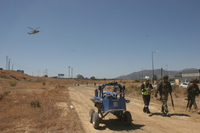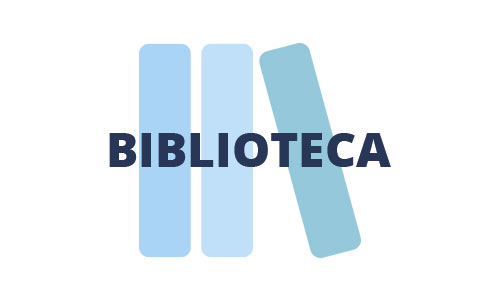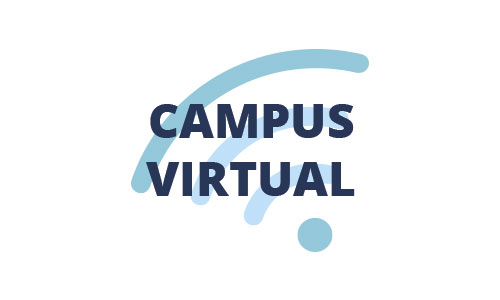Oferta de Contrato Predoctoral para la formación de Doctores
 1
/
1
1
/
1

Abierto el plazo (hasta el 07/11/2019) para un Contrato Predoctoral para la formación de doctores (convocatoria 2019), asociada al Proyecto del plan Nacional RTI2018-093421-B-100 del Grupo de Robótica y Mecatrónica de la Universidad de Málaga https://www.uma.es/robotics-and-mechatronics/ . Proyecto: “Hacia equipos resilientes de Manipuladores UGV y UAV para tareas robóticas de búsqueda y rescate (TRUST-ROB)”.
Convocatoria y solicitud del Contrato Predoctoral en:
http://www.ciencia.gob.es/portal/site/MICINN/menuitem.dbc68b34d11ccbd5d52ffeb801432ea0/?vgnextoid=14d767e8fd8cd610VgnVCM1000001d04140aRCRD
Adjunto os remito oferta de Contrato Predoctoral para la formación de doctores (convocatoria 2019), que está asociada al Proyecto del plan Nacional RTI2018-093421-B-100 del Grupo de Robótica y Mecatrónica de la Universidad de Málaga https://www.uma.es/robotics-and-mechatronics/ y que lleva por nombre “Hacia equipos resilientes de Manipuladores UGV y UAV para tareas robóticas de búsqueda y rescate (TRUST-ROB)”.
Requisitos:
Podrán ser solicitantes todas aquellas personas que se encuentren matriculadas o admitidas en un programa de doctorado para el curso 2019/2020, en el momento de presentación de la solicitud. También podrán ser solicitantes todas aquellas personas que, en el momento de presentación de la solicitud, no estando matriculadas o admitidas en un programa de doctorado, estén en disposición de estarlo en la fecha en la que se formalice el contrato (tener cursados 300 créditos de estudios universitarios de los que al menos 60 deben ser de nivel máster).
Se valorará: Expediente académico; Experiencia en programación (C/C++, ROS); Conocimientos de robótica, visión por computador, inteligencia artificial, control; Nivel de inglés.
Plazo: hasta el día 7 de noviembre de 2019 (14:00 hora peninsular).
En la siguiente página se puede acceder a la convocatoria y solicitud del Contrato Predoctoral:
http://www.ciencia.gob.es/portal/site/MICINN/menuitem.dbc68b34d11ccbd5d52ffeb801432ea0/?vgnextoid=14d767e8fd8cd610VgnVCM1000001d04140aRCRD
En tramitación de la ayuda se puede acceder a la aplicación telemática de solicitud.
Un saludo, Alfonso García Cerezo
Prof. Dr. Alfonso García Cerezo
Departamento de Ingeniería de Sistemas y Automática
UNIVERSIDAD DE MALAGA C/ Doctor Ortiz Ramos, s/n. Campus de Teatinos 29071-MÁLAGA SPAIN
P.S.:
TITULO: Towards Resilient UGV and UAV Manipulator Teams for Robotic Search and Rescue Tasks (TRUST-ROB)
ABSTRACT: Search and rescue robots are expected to perform in disaster sites (both natural and man-made) that are extremely prone to technical problems and multiple and unexpected dangers. This is a safety-critical issue, because failure of emergency response technology may result in an increased risk, not only for the equipment and the environment, but also to the survivors and the first responders.
The mission of the TRUST-ROB project is to develop important resiliency and fault-tolerance characteristics that are necessary to achieve a heterogeneous team of robotic vehicles cooperating in harsh disaster scenarios in order to be able to dependably accomplish their specified search and rescue tasks. In particular, the project considers a team composed of at least two unmanned ground vehicles (UGVs), one of which is a collaborative mobile robot for remote interaction with the victims, and two unmanned multi-rotor aerial vehicles (UAVs), one of which incorporates a delta manipulator.
To this end, the project will address major technical difficulties encountered by robots in actual disaster conditions. The analysis of electrical, electronic, mechanical, control, and communication vulnerabilities in first response scenarios will serve to define novel fault-tolerant techniques and design criteria for UGVs, UAVs, and the mission control centre. Furthermore, new developments in machine learning methods will be applied to improve the reliability of intelligent path planning and motion control in disaster sites with GNSS-denied areas, limited perception due to lighting, dust or smoke, and unpredictable terrain conditions and/or obstacles. Resiliency of multi-robot missions will be approached by developing new methods for high-level mission specification, validation and coordination in the face of environment and temporal uncertainties, and also by distributed bio-inspired capabilities for dispersion and regrouping with different types of multi-vehicle formations. Physical interaction between the collaborative manipulators and the victims will also receive a safety-critical approach by designing an autonomous collaborative robot for victim manipulation from a UGV, innovative adaptive soft effectors, autonomous victim manipulation from a UGV, and intelligent UAV solutions for placing biomedical sensors on the victim.
The project pursues the integration of these novel solutions in a reliable multi-robot system that will be tested and validated in realistic search and rescue field exercises. End users and emergency response experts will be systematically involved in the project through the support of the Universidad de Malaga Chair for Security, Emergency and Catastrophes.







